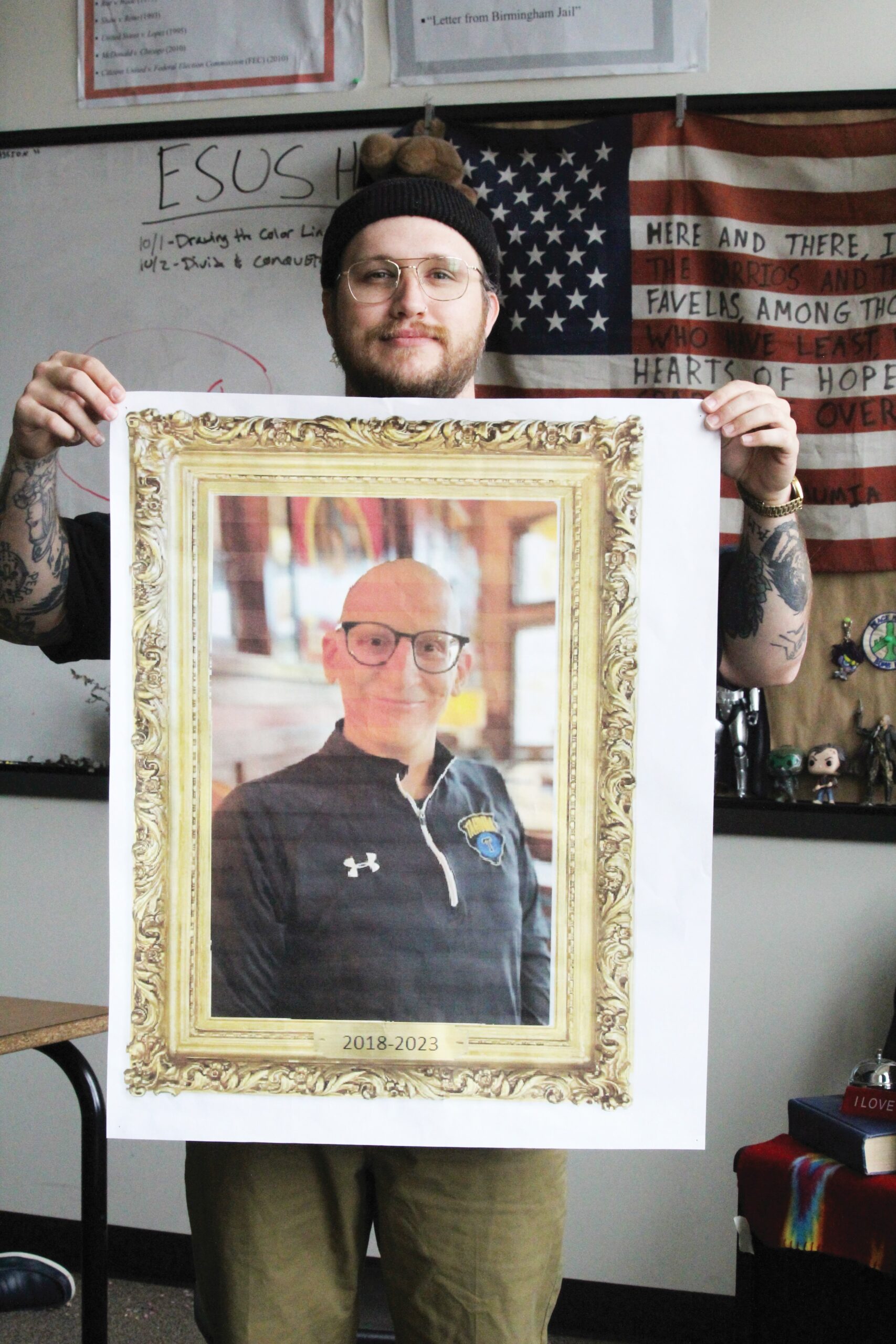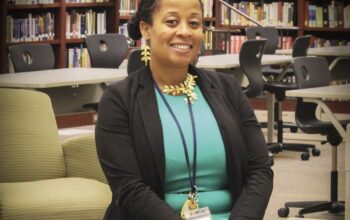InFocus is a new addition to the Roosevelt News. Led by Chief Content Officer Karrina Gerhardt, InFocus aims to present some of the Roosevelt’s difficult and elusive topics. This inaugural piece about consent was written by Sophia O’Hara and Ana Jurca.
Sexual consent, as defined by the new Roosevelt health curriculum is “permission or agreement to engage in sexual activity”. However, that definition leaves room for a lot of confusion. In early November, the health department received a new version of the curriculum from the school district aiming to resolve that confusion. This version has a stronger focus on sex violence and consent, as well as holding the offender accountable, rather than the victim.
Here’s the sticky part: Verbal consent is ideal, but it is not required legally. However, if a victim believes they were sexually assaulted, Seattle PD says that they take it as such. Although it’s not mandatory to verbally consent, the FLASH curriculum states the importance of verbal consent and positive body language in order to avoid confusion.
Wendy Arness, a health teacher at Roosevelt, emphasized how important she feels the FLASH (Family Life and Sexual Health) curriculum is. Arness explained, “I actually really like this one because it’s a lot more on sexual violence and consent, which was previously only touched on”. Seattle Public Schools is now approaching tough topics like gender roles as early as elementary school in order to begin combating stereotypes as early as possible. The new curriculum attempts to discuss the grey areas that surround the concept of sexual consent, which is increasingly ambiguous. It specifies that consent needs to be clear, and even if a verbal agreement is given, body language can negate that. One of the most ground-breaking changes has been shifting the idea of verbal consent from “no means no” to “yes means yes”. “No means no” indicates that unless otherwise stated, sex is desired and consensual, and therefore legal. This implies that silence and negative body language are assumed to be expressing consent. The new phrase “yes means yes” emphasizes the need for explicit verbal communication and mutual agreement.
The curriculum also reiterates the idea that a person can change their mind during sexual activity, altering the previous consent. In addition, a person consenting to one form of sexual activity does not automatically mean that they consent to any others.
Equally important is the distinction between changing one’s mind and feeling coerced into agreement. For example, if someone has to ask repeatedly and a partner eventually agrees, consent has not necessarily been given. Seniors (the most sexually active grade at Roosevelt) were given a survey on sexual consent containing a question focusing on this ambiguity. The question asked the following: “Veronica and Chad are friends. Chad has approached Veronica multiple times about having sex, and after five or six time Veronica finally agrees. Should Chad follow through?” The results were unfortunately negative. 53% of male students chose the wrong answer, saying that Chad should continue. Only 39% chose the correct answer (data does not add up to 100% because some students did not answer this specific question). However, 86% of female students thought Chad should not continue, and only 6% thought he should. This data clearly highlights a flaw in what students have been taught. Being pressured into engaging in sexual activity is not synonymous with consent. The hope is that with better education, cases of sexual assault will go down and a better understanding of what sexual consent is will be known by the students.
142 Colleges and 51 schools and school districts are facing federal investigations due to mishandling sexual assault cases and Title IX violations regarding sexual assault according to Huffington Post
The city of Seattle voted to direct the focus of sexual assault onto the offender rather than victim of the crime which is what had been taught and enforced previously. This change also forces the culprits to take responsibility for their actions rather than dumping it onto the victims. This has been implemented in the school systems (such as the new curriculum) as well as the greater Seattle area.
The Seattle Police Department also understands that sexual assault has an evolving definition. A representative from the Public Affairs office said that “what one couple may consider to be consent might be considered sexual assault to another. If a victim believes an encounter was sexual assault, then they were sexually assaulted.” Similarly, “it doesn’t matter if the victim is intoxicated, or if both the victim and the assaulter are intoxicated. If the victim believes they were sexually assaulted, we will treat it… that way.” Seattle PD claims that police will take any report seriously, as “sexual assault is a very serious crime”. However, according to the Rape, Abuse, and Incest National Network, (RAINN) only three out of every 100 rapists in the US will ever spend a day in prison. Approximately 46% of rapes are reported to the police, 12% lead to an arrest, 9% lead to prosecution, and 5% lead to a felony conviction. This data does not even include other forms of sexual violence, which are even less likely to result in a conviction.
Only three out of every 100 rapists in the US will ever spend a day in prison, according to the Rape, Abuse, and Incest National Network (RAINN).
Roosevelt is working hard to educate their students on the parameters of sexual assault, and also to provide help and counseling for victims of sexual assault. The actual definition of sexual assault is one of the trickiest things to pinpoint, since there are so many variables and factors within each situation. The THC follows the legal definition of sexual assault. When asked about how many sexual assault cases have been reported in recent years, nurse practitioner Helen Weems from the Roosevelt Teen Health Center (THC) was unsure how to answer in a way that accurately portrayed the issue at hand. Since so many cases go unreported, giving a number would not be representative of how prevalent an issue it actually is. The THC also strives to eliminate the problem of sexual assault before it arises as best they can: “In terms of prevention…when primarily girls come inside to talk…we ask, ‘Are you wanting to have sex? Is this something you are desiring?’ [as well as] how they make that decision, warning signs for controlling or manipulative relationships.” After a sexual assault, the THC provides health care such as STD and STI testing and emergency contraception.
Social work intern Alex Waxer and other THC staff members also aid students in the form of mental health help like therapy. Once Waxer has identified someone as a victim of sexual assault, she works with them to talk through the trauma and help them get to a place where they feel comfortable reporting it. “There’s not a clear warning sign…[but] if they’re shying away from talking about certain things… I know to keep pressing with that.” said Waxer. It’s often difficult to tell when someone is a victim of sexual assault if they don’t want to share, but once the signs present themselves, the people at the THC are prepared and ready to help the victim. “Anxiety is the most obvious” said Waxer when asked about telltale signs of sexual assault, “Sometimes some sort of PTSD [can be present]. [There can be] a lot of fear of public places…It’s an internal self blame that goes on.”
There is more widespread awareness of sexual consent and the ambiguity surrounding it across the country. There has been a big focus on the issue on college campuses, since 1 in 4 women attending university are victims of sexual assault in recent years. Education surrounding sexual consent is increasing in the the hope is to lower these numbers. The change in policy to focus on the offender is in part because it is believed that these are perhaps the least-educated people and, in some cases, if they were aware that what they were doing was illegal, it wouldn’t have occurred.
Sexual assault continues to be a widespread and confusing issue. Though both Roosevelt and Seattle are making important changes, much more needs to be done. As Arness has pointed out, “It’s unfortunate because when it comes to those grey areas, we get one semester of health throughout all of high school and a lot of people aren’t even taking it, they’re taking it online. So we’re missing out on that…It’s important that they get this information, and where do they talk about it after that?”
Featured Picture: As a recent survey has demonstrated, consent is a tricky topic among Roosevelt students. Picture by Xing Gilbert




Thank you for writing this Ana and Sophia, this needs to be heard.